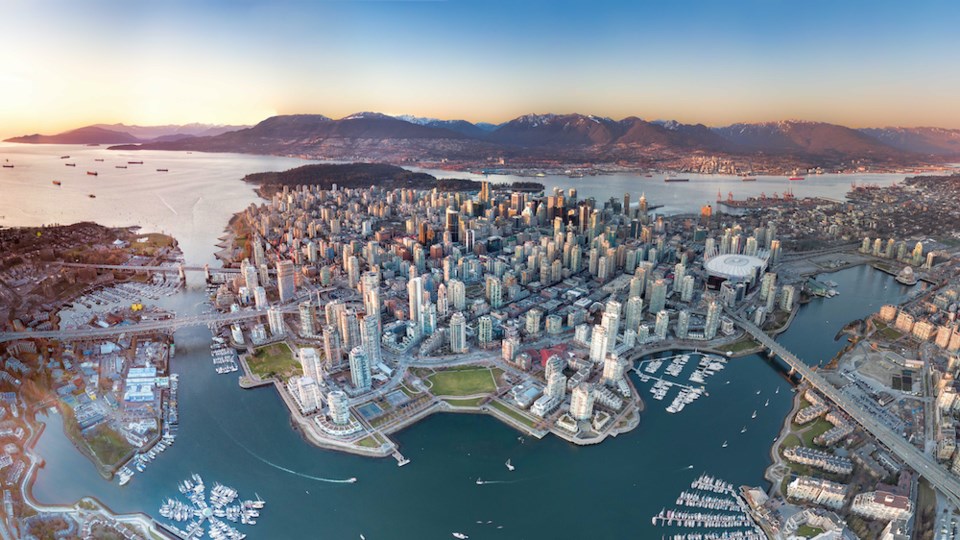The North Shore Mountains are the true high points of the Metro Vancouver area, but humans have erected a few noteworthy structures as well.
While the earliest days of the city didn't see anything massive being built, soon Vancouverites were heading skyward with the likes of the Hotel Vancouvers (yes, plural), Sun Building and Marine Building.
And while these days Vancouver doesn't have any outright height leaders (more on that soon), it's not a short city, so here are five things you probably didn't know about the tall things humans built around the city.
1. The tallest building in Vancouver is around 41 tallest in Canada, and will be passed by other B.C. buildings
It's not a surprise Vancouver doesn't have the tallest building in Canada, but as the third largest city in the country many would expect it to have one of the tallest. But Vancouver's tallest building, the Shangri-La, in the low 40s, and will fall further from the top as towers under construction are completed.
And it's unlikely the city will have any of the country's tallest structures, with view cones often restricting height. Currently none of the towers under construction or proposed in Vancouver would crack 200 m (the Shangri-La is 201 m).
However, outside the City of Vancouver, the race to go higher is still on, especially in Burnaby, which has a few projects projected to surpass Vancouver's tallest building.
2. Was the Sun Building or Marine Building tallest in Canada?
While it's often written that the Sun Building (in 1912) and Marine Building (in 1930) took the title of tallest building in Canada and the British Empire when they were completed, both were battling other towers as well.
The Sun Building was completed in 1912 and stands 82.3 m tall. Completed in 1899, Toronto's Old City Hall has a clock tower peaking at 103.6 m. There's also the Royal Liver Building in Liverpool, England, which was finished in 1911 and tops out at 98 m (not including its bird sculptures).
The Marine Building, which was finished in 1930, faces similar issues, as it sits around 98 m itself.
However, there are claims that both the Sun and Marine buildings held the titles.
3. The former world’s tallest hybrid wood building
A title Vancouver did hold for a bit was home of the world’s tallest hybrid wood building. The Brock Commons at UBC stands 18 floors and 53 m above street level.
At the time it opened in 2017 it was the tallest of its kind. Hybrid wood buildings use wood products, but not in the form of boards like in most houses. Instead, it's more akin to plywood, though there are a variety of techniques.
And those techniques are evolving. The Brock Commons didn't hold the title long; for example, there's now an 85 m building in Norway. And more are on the way, with Australia working on a pair of even taller towers. Vancouver's still looking at the technology, too, and one architectural firm has proposed Canada's Earth Tower, a 40-story structure (that may become the world's tallest itself).
4. A former record-holding flag pole still stands
During Expo 86 the world's tallest free-standing flag poll was unveiled in Vancouver. Standing around 86 m, it was a sort of signpost, directing people away from the main Expo 86 site on False Creek towards the Canadian Pavilion at what is now the conference centre.
It has long lost its title as the tallest flag pole (the tallest is now in Saudi Arabia and stands 171 m tall), but it's still around. It was relocated to a car dealership in Surrey.
5. The world's tallest Passive House will soon be here, probably
The Curv is a proposed 60-storey project set for Vancouver's West End, and at an estimated 178 m, it would become the world's tallest Passive Haus.
Passive House buildings are specifically built to be more sustainable than other structures with the goal of reducing ecological footprints. Built to a specific, voluntary standard, the idea was first established in the early 1990s and has grown substantially in recent years.
Some things Passive House standards focus on are energy consumption and heating/temperature control.



